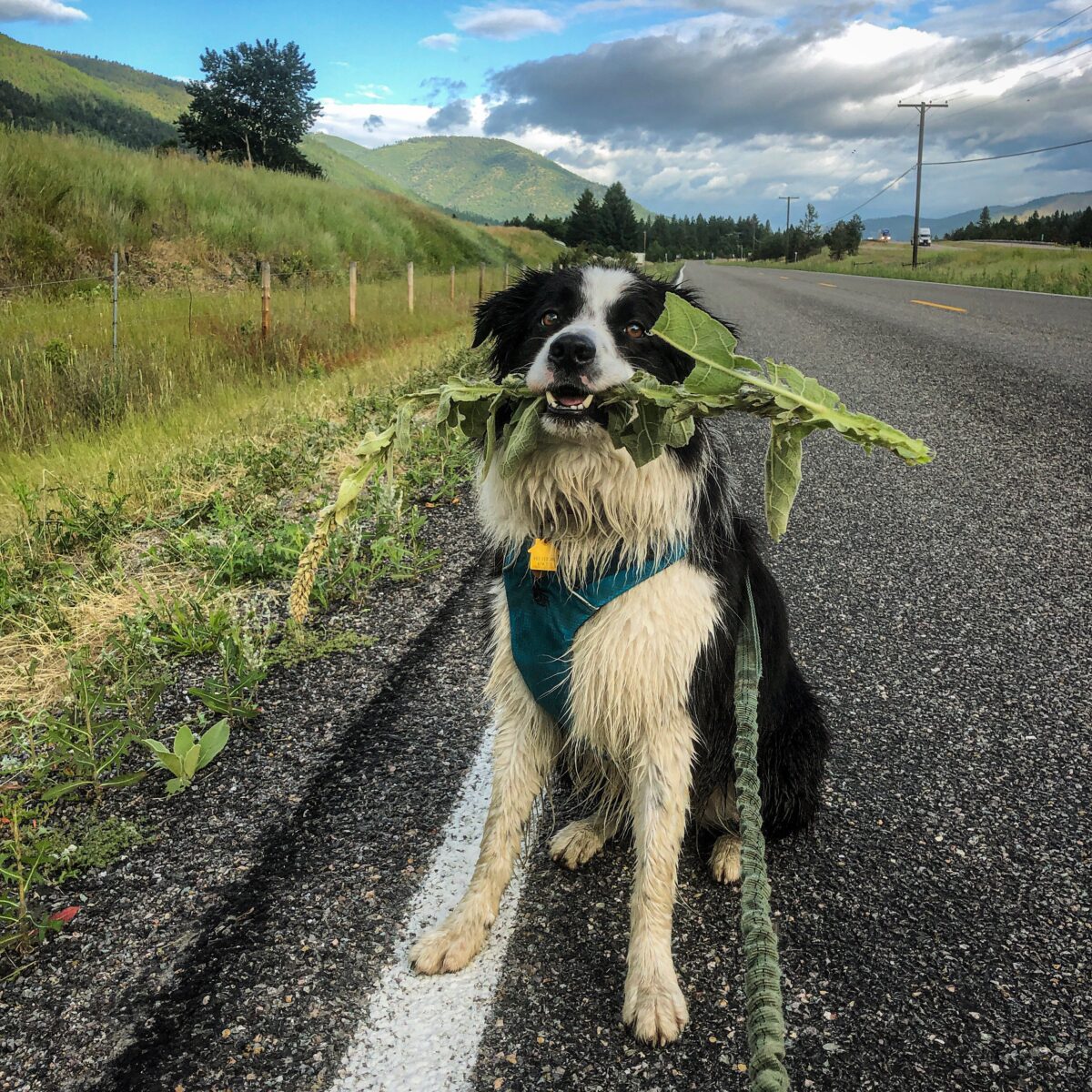Conservation detection dogs are dogs that are specially trained to sniff out odors related to conservation. They work similarly to bomb, drug, or search and rescue dogs—but instead of searching for accelerants, drugs, or missing people, they search for things related to conservation biology.
Generally, conservation detection dogs sniff for things that fall into a few broad categories:
- Invasive species. These are plants or animals that have colonized a part of the world that they’re not native to. Because they’ve arrived with human help and without any natural predators or diseases, they can take over an ecosystem. This can be devastating to the native plants and animals. Generally, conservation detection dogs are used to find plants or insects in this category. They may also be trained to find the scat (poop) of invasive animals as a way for scientists to know if those invasive animals are present in an area or not.
- Examples that our dogs have sniffed for include the plant dyer’s woad (which releases a toxin from its roots that kills nearby plants and can produce 10,000 seeds each season) and zebra mussels (which are native to Ukraine and surrounding areas but have wreaked havoc on the waterways of North America, killing off native animals and clogging pipes).
- At-risk species. Dogs can be trained to sniff for the scat of endangered animals—or really, any animal. Once the dog finds a pile of scat, the handler can collect a sample to send to the lab for analysis. Depending on the study, researchers may be interested in the stress levels of grizzly bears, the genetic variability in a jaguar population, the diet of a Flammulated owl, or simply a population estimate of black-footed ferrets.
- Wildlife crime. Dogs can be used at ports of entry like airports or international borders to screen for smuggled wildlife parts. Conservation detection dogs around the world help in anti-poaching efforts by searching vehicles and shipping containers for shark fin, ivory, pangolin scales, live birds being smuggled for the pet trade, and more.
- Contaminants. The final large category of conservation detection dog work is contaminants. Dogs can be trained to find gas leaks in pipelines, heavy metals along shorelines, agricultural pests, and much more. This work is done carefully to ensure that the dog is safe!
[yarpp]
How Do Conservation Detection Dogs Work?
All dogs naturally know how to use their noses to find things. Their super sniffers help them find food, read their “pee-mail” (check up on the hormonal communications left by other animals in urine), and more.
The trick with a conservation detection dog is teaching the dog to search for a given target and ignore everything else.
We’ll give a VERY brief overview of the training process here. Know that this generally involves many training sessions over the course of weeks, and we’re simplifying a lot here.
We start by teaching the dogs a cue to “search” the environment for food. This helps the dog understand a cue to hunt for odor. We can teach that skill separately or even before the dog has learned a target odor! At the time of writing, we have a 15-week-old puppy who’s already been playing this game for weeks!
Once a dog is happy and confident searching for food in a variety of environments, it’s time to introduce a target odor. The hunting games are helpful for teaching the dog how to hone their sense of smell and build up some love and joy for the game of searching.
There are many techniques for introducing a target odor to a dog. Generally, what we like to do is provide the dog with a single jar, bucket, or box in a blank room. That container has the target odor in it—often scat or a plant.
The dog will naturally approach the box. We wait to see their nostrils flare as they inhale. At that point, we use a marker (like a clicker) and reward the dog. We repeat this over and over, gradually adding in more containers to help the dog understand that it’s the odor that pays!
We then start to layer in distractors, like the scent of treats, toys, other dogs, or whatever else we can find. It’s important that the dog learns that this odor pays, not just any new odor.
We then build up the dog’s endurance to work in larger areas and for longer times and play lots of games to help the dog learn how to follow odor cones on windy days, when there are objects in the way of airflow, when the target is in a corner or up high, and much more.
This rapidly growing field is very exciting, and there are increasing opportunities available for both full-time detection dog teams and community scientists or hobbyists.
 Donate
Donate

